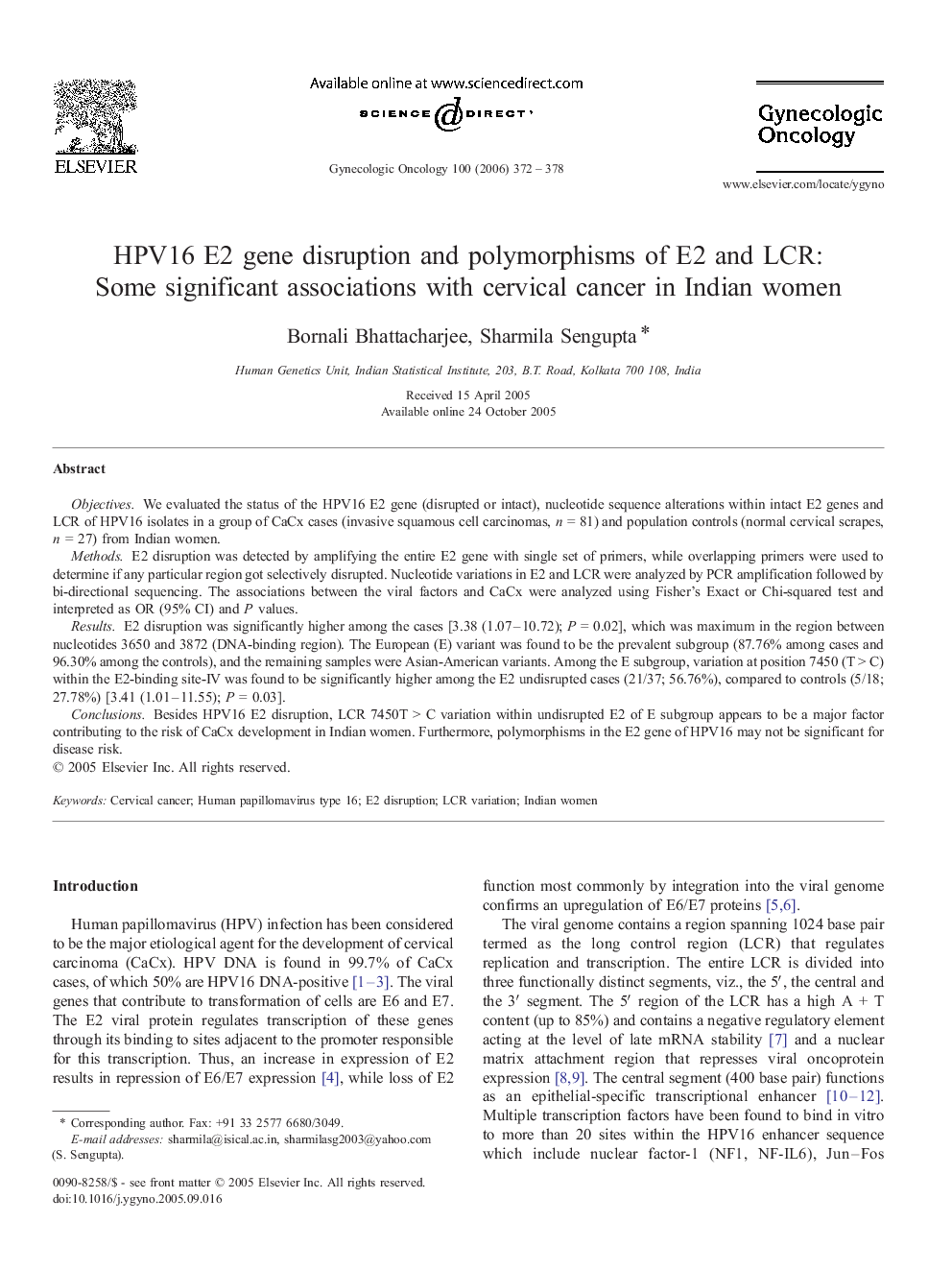| Article ID | Journal | Published Year | Pages | File Type |
|---|---|---|---|---|
| 3945317 | Gynecologic Oncology | 2006 | 7 Pages |
Objectives.We evaluated the status of the HPV16 E2 gene (disrupted or intact), nucleotide sequence alterations within intact E2 genes and LCR of HPV16 isolates in a group of CaCx cases (invasive squamous cell carcinomas, n = 81) and population controls (normal cervical scrapes, n = 27) from Indian women.Methods.E2 disruption was detected by amplifying the entire E2 gene with single set of primers, while overlapping primers were used to determine if any particular region got selectively disrupted. Nucleotide variations in E2 and LCR were analyzed by PCR amplification followed by bi-directional sequencing. The associations between the viral factors and CaCx were analyzed using Fisher's Exact or Chi-squared test and interpreted as OR (95% CI) and P values.Results.E2 disruption was significantly higher among the cases [3.38 (1.07–10.72); P = 0.02], which was maximum in the region between nucleotides 3650 and 3872 (DNA-binding region). The European (E) variant was found to be the prevalent subgroup (87.76% among cases and 96.30% among the controls), and the remaining samples were Asian-American variants. Among the E subgroup, variation at position 7450 (T > C) within the E2-binding site-IV was found to be significantly higher among the E2 undisrupted cases (21/37; 56.76%), compared to controls (5/18; 27.78%) [3.41 (1.01–11.55); P = 0.03].Conclusions.Besides HPV16 E2 disruption, LCR 7450T > C variation within undisrupted E2 of E subgroup appears to be a major factor contributing to the risk of CaCx development in Indian women. Furthermore, polymorphisms in the E2 gene of HPV16 may not be significant for disease risk.
